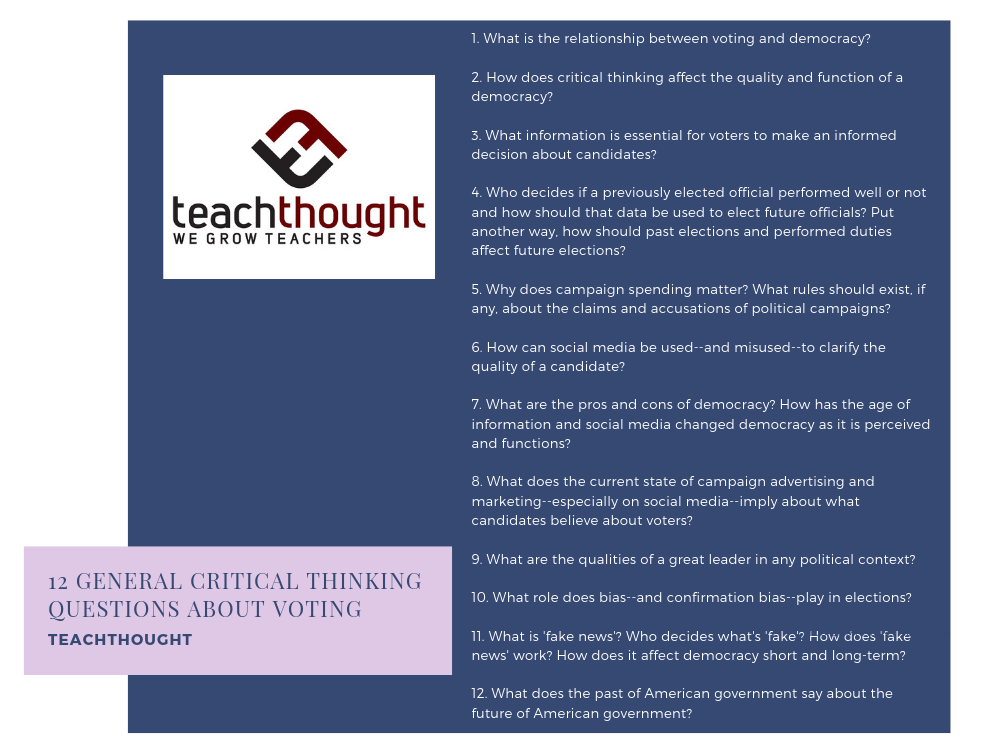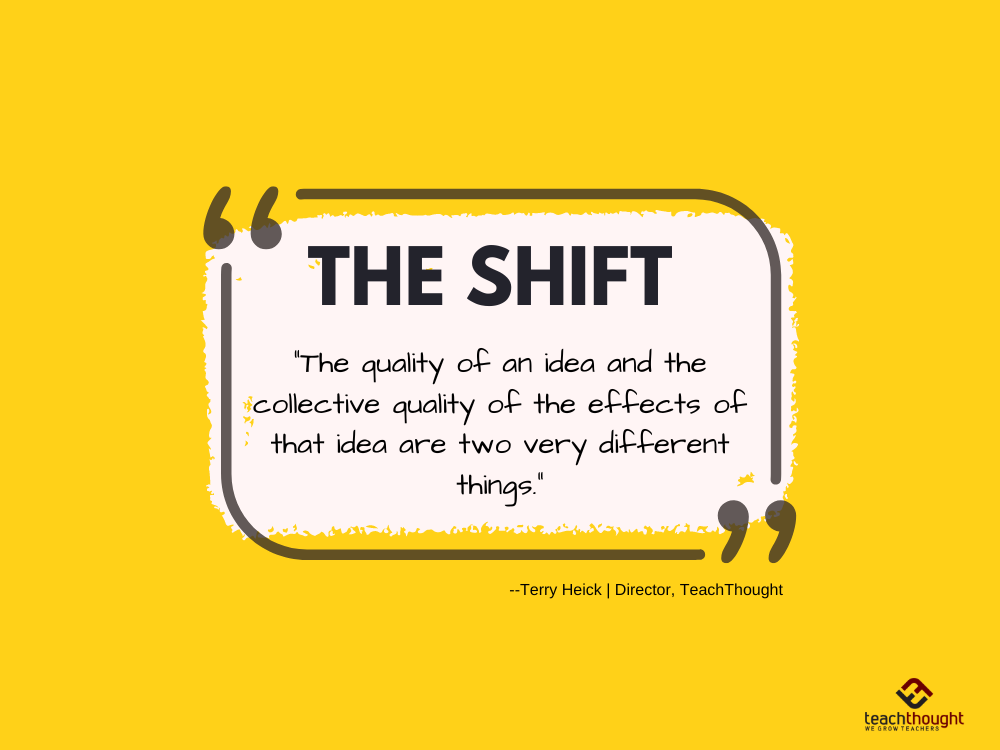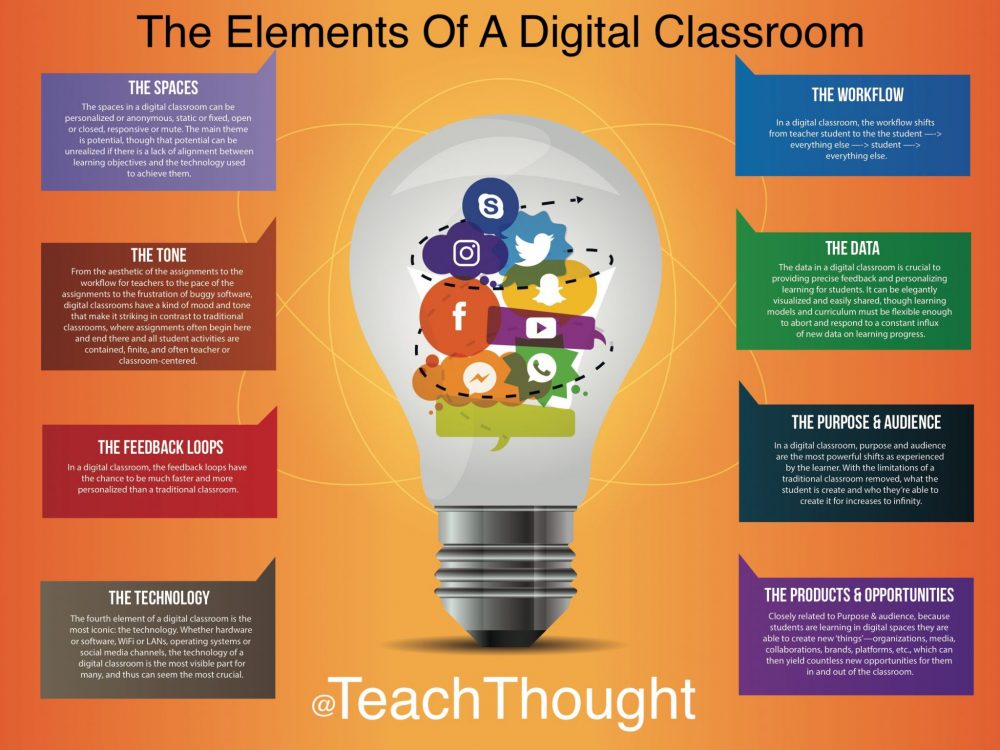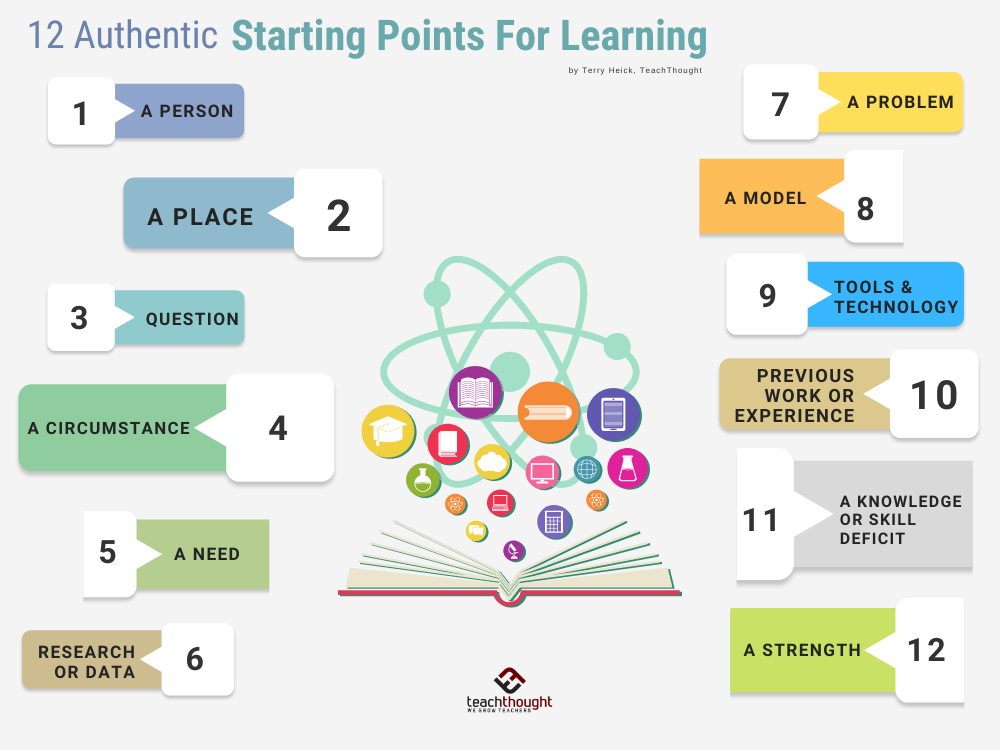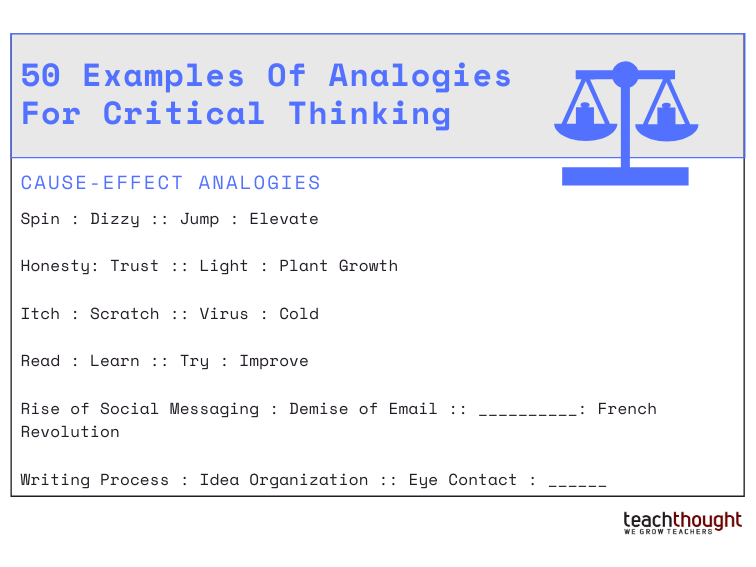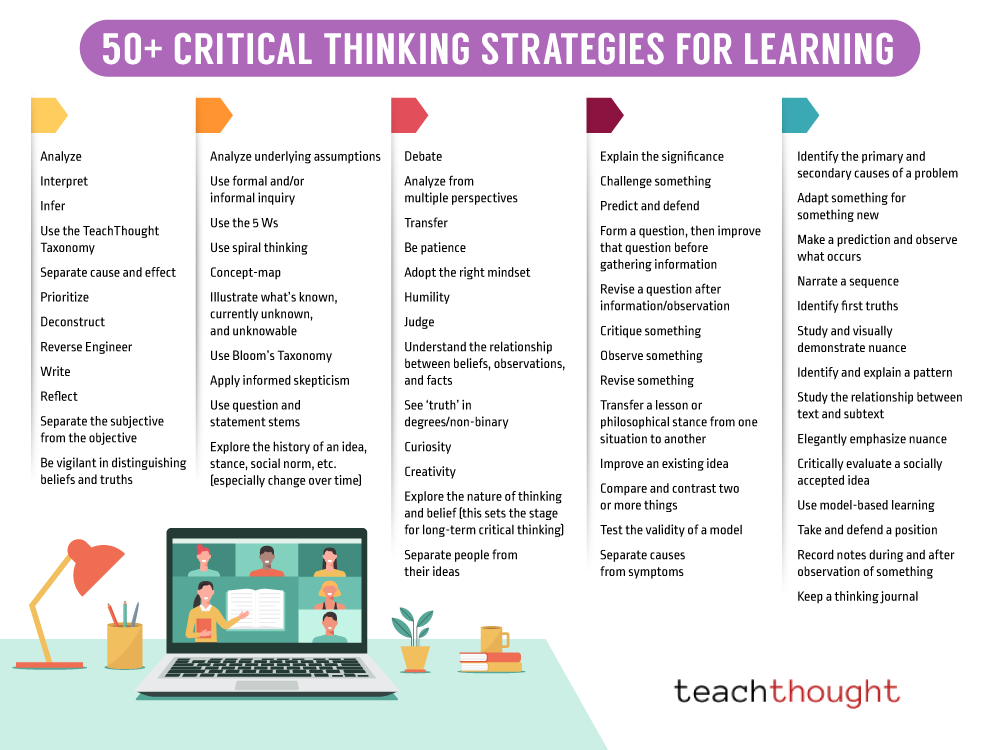Tag: Terry Heick
12 General Critical Thinking Questions About Voting And Government
Critical Thinking Questions About Voting & Government by Terry Heick Note: This has been updates from a 2018 version Just […]
On Student Engagement: How To Be As Interesting As…
One student engagement strategy is to offer diverse pathways through content–pathways students would have to ‘unlock’ to progress.
Shifting Focus From Ideas To The Effects Of Those…
The quality of an idea and the collective quality of the effects of that idea are two very different things.
The Elements Of A Digital Classroom
In a digital classroom, teachers can become worried that no ‘real learning’ is happening or that they’ve somehow failed to plan sufficiently.
Teach Students To Think Irrationally
Our task? Overcome a child’s natural tendency to play, rebel, and self-direct in hopes of providing them with an ‘education.’
12 Authentic Starting Points For Learning
Learning–real, informal, authentic, and lifelong learning–can ‘begin’ with just about anything.
50 Examples Of Analogies For Critical Thinking
By forcing students to distill one relationship in order to understand another, it’s almost impossible to solve analogies without understanding.
50 Critical Thinking Strategies For Learning
Critical thinking strategies often employ multiple data sources and perspectives in pursuit of understanding.
